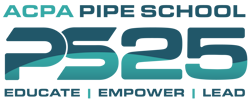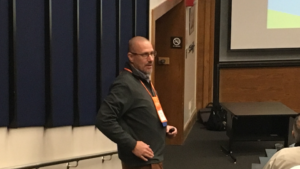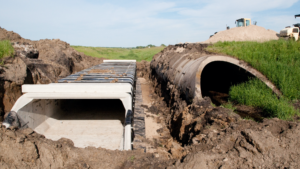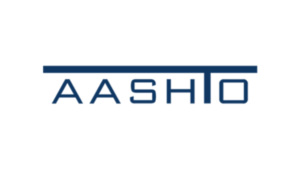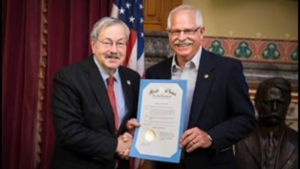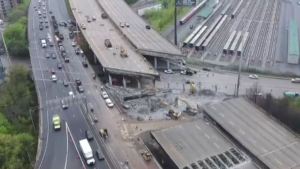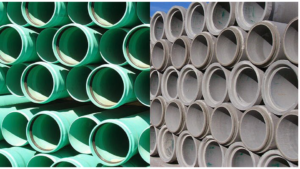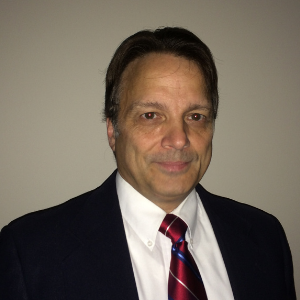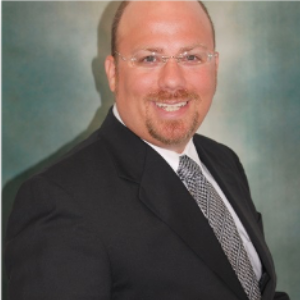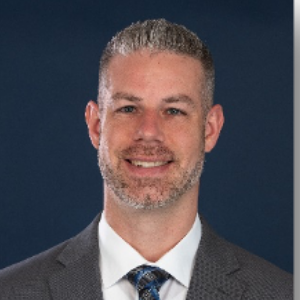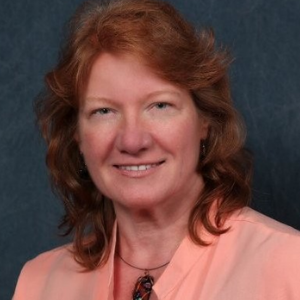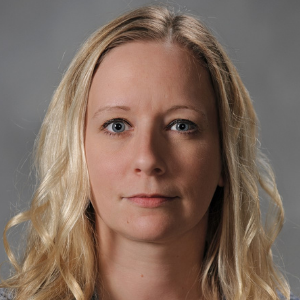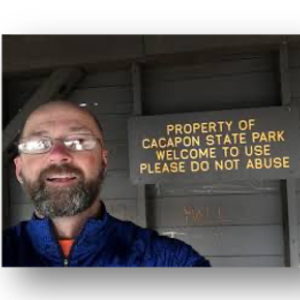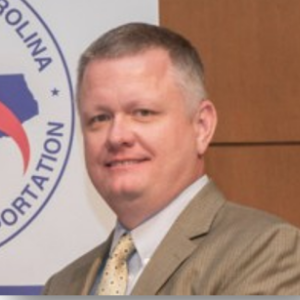Transportation Track Schedule
The Transportation Track will take place Feb 1st-3rd with classes from 12:30pm-4pm CT on Monday, 10am-4pm CT on Tuesday, and 10am-4pm CT on Wednesday.
The Transportation Track provides a forum for DOT and Public Agency professionals from across the country to collaborate, sharing best practices and innovations that stretch their budgets while taking care of their citizens transportation needs. This year’s Transportation Track is just as exciting as in past years. Topics include research, asset management, resiliency, innovation, accelerated bridge construction, bridge inspection – underwater, revisions/standards. Instructors from several State DOTs and local agencies will share their success stories and best practices.
Below is a description of the different classes available during the Transportation Tracks. Click here to see the Technical Track schedule.
Return to Pipe School Schedule Page.
Transportation Class Outline (click to jump to track)
Redecking a Bridge Using Accelerated Bridge Construction
Underwater & UAV Bridge Inspections
The Long and Winding Road Back to Sustainable Culverts
North Carolina’s DOT’s Use of QCast
Major Mobility Investment Program (MMIP)
Lateral Bridge Slide – Accelerated Bridge Practices
Pipe Installations – Concrete or Thermoplastic – What Difference Does it Make
Transportation
Virtual Plant Tour
Michael Kusch, P.E. – Foley Products | Al Hogan, P.E. – ACPA.
Learn the inner workings of a concrete pipe plant as we go on a virtual tour inside Foley Product’s Franklin, TN, Plant. Our tour guides will walk through the production process to produce RCP. Students will be have a chance to learn the following:
- How our plants utilize the local supply chain of raw materials
- See the process and timing of combining all the local raw materials into a finished RCP product
- Observe some of the quality control and checks that go into producing a high quality finished and engineered product
- and observe our most important strength confirmation test to confirm our product is structurally adequate before it leaves our plant site
Welcome Session
Speaker: Craig Stevens – Delaware DOT
Welcome to the Pipe School 2021 Transportation Track! Craig Stevens will open the Transportation Track with a message for his fellow agency engineers. Craig has attended Pipe School each year over the last four years, often participating in poster sessions or speaking about the pipe and drainage program at Delaware DOT. This year Craig will open the Transportation Track and share some of the takeaways he’s gotten from past Pipe Schools, and some tips for how to get the most out of the first ever virtual Pipe School experience in 2021.
Resilience and Sustainability
Speaker: Tom Macioce, P.E. – PennDOT | Nick Vivian, P.E. – PennDOT
Increasing storm intensity and frequency have become widely accepted in the engineering community primarily because engineers use historical data to inform their designs. But with more severe storms becoming the norm, the stationarity of this data is significantly less than reliable. Agencies must plan for climate and weather-related disasters by improving the resilience, durability and sustainability of civil infrastructure materials and designs. The urgency of climate change lands solidly in the engineer’s lap, and in order to successfully design for it, the engineer must be given the autonomy to choose materials for their projects.
Industry Leadership Panel
Engage with industry leaders and gain unique insights in this panel put on by the Women in Concrete Alliance, the American Association of State Highway and Transportation Officials (AASHTO), and the American Concrete Pipe Association (ACPA).
The panel, featuring executives at state highway agencies and moderated by Brandye Hendrickson, AASHTO Deputy Director, will provide their perspectives on issues facing every Department of Transportation (DOT) including: building for the future, state funding, challenges during the pandemic, and the engineer’s right to choose. The group of senior leaders will shed new light on pressing topics and provide implementable career tools. Learn more about the panel.
Getting to Know AASHTO
Speaker: Moe Jamshidi – Nebraska Department of Roadways | Dan Miller – Ohio DOT
The American Association of State Highway Transportation Officials is a nonprofit, nonpartisan association representing highway and transportation departments in the 50 states, the District of Columbia, and Puerto Rico. It represents all transportation modes including: air, highways, public transportation, active transportation, rail, and water. AASHTO works to educate the public and key decision makers about the critical role that transportation plays in securing a good quality of life and sound economy for our nation. AASHTO is an international leader in setting technical standards for all phases of highway system development. Standards are issued for design, construction of highways and bridges, materials, and many other technical areas. Some of the key points to be discussed in this session include:
- If a DOT wants to join a technical committee, how would they get involved?
- How does the AASHTO Standards development and revisions process work?
- Why should states adopt AASHTO specifications rather than creating their own?
- What is the relationship between ASTM and AASHTO specs? Are there always identical sister specs?
- How are Materials committee members chosen?
- Are members of 4a (Rigid Culverts) the same as members on 4b (Flexible Culverts)?
- Is each member a specialist or are they assigned?
- What type of relationship does industry have with the committees?
Redecking a Bridge Using Accelerated Bridge Construction
Speaker: Kevin Lindell – DelDOT
This course presents the design and construction undertaken for the replacement of the existing I-95 NB bridge deck using accelerated bridge construction (ABC). The course will cover what ultimately led to the decision to use precast concrete panels with ultra high performance concrete (UHPC) to re-deck the bridge structure. The course will also cover the construction phasing and methods used to construct the new deck while on an accelerated schedule. Lastly, it will outline lessons learned and cover why this project was a success for the Department.
Underwater & UAV Bridge Inspections
Speaker: Tracy Larkin – NVDOT | Jennifer Wells – MN DOT
The State of Nevada contains approximately 1850 bridges on its public roads and streets; approximately 1050 of these are on the State highway system. In general, bridges are designed and constructed with the intent of providing a large margin of safety and a long service life (75 years) for the traveling public. This is accomplished through the application of stringent design criteria and construction specifications. Nevertheless, all structural elements deteriorate over time, sometimes prematurely, and, if left unchecked, will eventually present a hazard to bridge users. Therefore, a systematic program of periodic bridge inspections is necessary to evaluate condition and functionality, to detect structural problems and to extend the useful life of the bridge. Of course, the program must be developed recognizing economic constraints
Inspectors can observe structural conditions above water well in advance of failure. However, significant underwater structural conditions cannot be readily observed above water until the defect has progressed to where distress is evident. Therefore, underwater inspections must occur. Underwater bridge inspection is defined as inspection of the underwater portion of a bridge substructure and the surrounding channel, which cannot be inspected visually at low water by wading or probing, generally requiring diving or other appropriate techniques.
Partnering with Industry
Speaker: John Bilderback – WASHTO Construction/Materials Committee Chair | State Construction & Materials Engineer for Idaho Transportation Department
Agencies are often put in the awkward situation of needing to update specifications and standard drawings without necessarily having any product specialists on staff. That’s where industry experts can prove to be a valuable asset. This partnership requires trust from both parties, and there are considerations which can help to facilitate a strong team. Some examples and best practices from partnerships between state DOTs, industry, and even APWA, will be explored in this session.
The Long and Winding Road Back to Sustainable Culverts
Speaker: Doug Kirk. – WVDOT
Having based our selection of pipe materials mostly on initial cost led to serious maintenance issues. Considering long-term cost and safety will lead us to a more resilient highway system.
North Carolina DOT’s use of QCast
Speaker: Todd Whittington – NCDOT
This session will highlight North Carolina DOT’s use of technology to track manufactured products used in road and bridge construction. Product tracking tools such as radio-frequency identification (RFID) and bar-coding are being deployed in the field to streamline materials acceptance at the project site. These technologies also offer streamlined plant inventory for manufacturers. Tag technology allow for asset management throughout the service life of products such as pipe, guardrail, signs, precast, castings, and other items by storing location and manufacture data that will expedite maintenance, repair, or replacement when warranted. Discussion will also cover the criticality of partnership with Industry in overcoming specific hurdles to implementation of the technologies at manufacturing facilities and acceptance of new methods by producer and agency personnel.
Major Mobility Investment Program (MMIP)
Speaker: Monica Flournoy – GDOT
The presentation will focus on innovations in concrete and pipe demands for MMIP over the next decade. The Georgia Department of Transportation (Georgia DOT) is making major investments in the state’s transportation network to deliver projects that will meet a community need and deliver positive benefits to drivers. Major Mobility Investment Program (MMIP) projects were pinpointed that will create additional capacity, improve freight movement, provide transportation improvements and efficiencies, enhance safety, and decrease travel times.
Lateral Bridge Slide – Accelerated Bridge Practices
Speaker: Dalton Champagne. – ARDOT
The Arkansas Department of Transportation (ARDOT) completed the state’s very first lateral bridge slide project. This innovative approach allows the new superstructure to be built adjacent to the existing bridges on temporary supports, while the new substructure and foundations are positioned underneath the existing bridges – all while traffic continues to flow normally. We will highlight key milestones of the project to raise awareness about FHWA’s Accelerated Bridge Construction.
Pipe Installations – Concrete or Thermoplastic – What Difference Does it Make?
Speaker: Don McNutt, PE – American Concrete Pipe Association
There are several similarities and then quite a few significant differences in the requirements for proper installation of reinforced concrete pipe and thermoplastic pipe products. Concrete pipe installations are based on ASTM C1479 and thermoplastic pipe installations are based on ASTM D2321. This class will provide a side by side comparison of these two unique specifications.
